The world is losing its biological diversity – or biodiversity – at an alarming rate. The primary force driving this is habitat degradation. When the places where animals, plants, fungi, and the myriad other organisms live are converted to other uses, conditions change and the prior residents often move on or die. The two major causes of this habitat degradation, or the extreme of wholesale habitat loss, are agriculture and urbanization. And it is certainly true that converting forests or wetlands to corn fields or apartment buildings changes the land cover, vegetation, soils, hydrology, and other environmental factors in drastic ways. We all expect that many of the kinds of organisms found in those “natural” environments will be missing from the “manmade” environments. And it stands to reason that, as more of the world is converted to “manmade” habitats, the space left for wild organisms diminishes and many are lost from the earth. [I’m using quotation marks around the words “natural” and “manmade” since these are rather gross oversimplifications of the range of human impacts – but that’s a topic for another day.]
While this narrative is true in the broad sense – there is abundant evidence of biodiversity loss resulting from human modification of the environment – it is too simple. It’s not just a case of cities (or farms, but this a blog about cities) replacing other kinds of ecosystems – there are some important nuances to this process. Many elements of nature – the rocks, soils, sunlight and water, but also many organisms – persist even as a city grows up around them. The kinds of species and their abundances will change after urbanization, but some wild life will remain from the previous community. Urban environments also encourage other kinds of organisms by providing habitats that were not present before. And urban environments are sometimes recolonized by species that were originally lost.
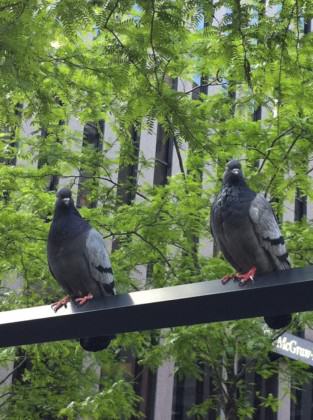
The biodiversity among us
When I mention urban biodiversity to my students for the first time, a common reaction is “Are you talking about rats and pigeons?” While rats and pigeons are certainly a part of the system, I think this reaction is shaped by thinking about the largest mobile (and therefore most conspicuous) organisms in the most heavily built-up portions of city. When I press these students, they realize that urban biodiversity also includes the small stuff (like plants in the sidewalk cracks, insects feeding on those plants, and microbes on the surfaces of … well, everything). They also realize that lots of parts of the city aren’t so heavily built-up – the parks and greenways, the low-density neighborhoods, or the outskirts of the city – and that these places are often greener (i.e., have more vegetation) and busier, biologically speaking.
When you consider this whole range – the variety of kinds of organisms and kinds of places in the urban matrix – it’s not hard to image that urban biodiversity can be quite rich.
But we can do more than imagine – increasingly we know. We have data. To list some examples from New York City, where I work:
- The Brooklyn Botanic Garden has been documenting plant distributions through their New York Metro Flora Project. This effort involves hundreds of field days per year, collecting and databasing occurrences of plants throughout the metropolitan region.
- The New York City Department of Parks and Recreation has a Natural Resources Group, which has been documenting communities of plants and animals throughout the city for over 25 years.
- The Center for Biodiversity and Conservation, a part of the American Museum of Natural History, has coordinated research on the NYC metropolitan area. A survey of leaf-litter invertebrates in Central Park even resulted in the description of a species of centipede new to science.
- NYC Audubon coordinates efforts at monitoring bird biodiversity through both citizen science efforts like the Christmas bird count and staff-led efforts like their work on colonies of wading birds.
In addition to these formal survey programs, academic researchers throughout New York City are finding all sorts of organisms in various field research projects, from coyotes and small mammals in our parks to unusual insects on green roof meadows.
Similar kinds of programs are happening in cities all around the world.
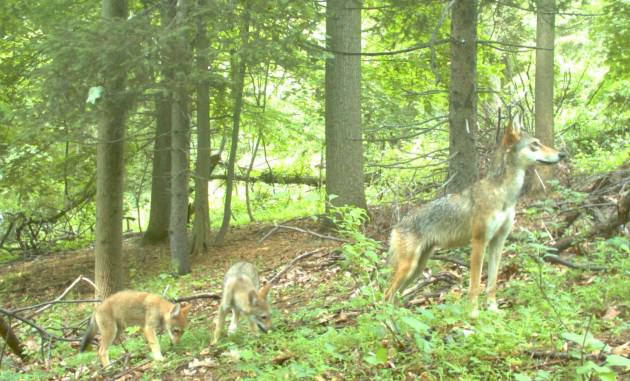
These efforts to document what species are present in cities – along with information about where and when they were observed – allow us to understand changes in distribution over time. Which species’ populations are declining and which are increasing? Which species have disappeared over time, which were lost and have come back, and which species are arriving for the first time in recorded history? These are critical data if we are to make targets for biological conservation or hope to track how invasive species or climate change alter the biota.
These efforts contribute to understanding not only the biodiversity patterns of individual cities, but in the aggregate they allow us to look for generalities about how cities affect biodiversity. How do city centers compare to the urban fringe? How does the age of the city affect biological diversity? Are patterns similar in tropical and temperate cities? Or across continents?
The number and scope of these urban biodiversity inventories has increased dramatically in the past 20 years. It’s a sad fact that cities were generally ignored by most academic ecologists and biodiversity scientists for much of the 20th century. We are finally starting to address that shortcoming – it’s going to be an exciting next decade for understanding how urbanization affects all kinds of organisms.
Urban biodiversity and people
As the previous blog post by Tim Beatley discussed, most urban residents encounter some amount of nature on a daily basis in a casual way – the shade from a street tree, the songbirds overhead or pigeons underfoot, or the calls of crickets on a summer evening. Many of these interactions may not even register consciously, and it’s interesting to think about how they affect the quality of life for city dwellers. There is a growing body of evidence for how contact with nature affects people’s health, attitudes, and behaviors, but I don’t know of research that specifically looks at how exposure to varying levels of biodiversity affects people. Does the satisfaction a visitor gets from a walk in the park increase if there is a greater variety of birdsong? Does a child get more engaged by seeing five kinds of pollinators visit a flower bed than she would if she only saw only three kinds? Would an apartment overlooking a high-diversity forest command a higher rent than an otherwise similar apartment overlooking a low-diversity forest?
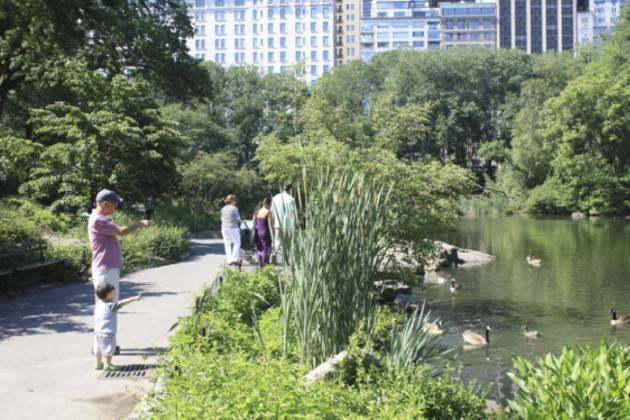
Ecologists have made great progress in understanding the relationship between biodiversity and ecosystem functions like productivity and resistance to invasion (though relatively little of this research has been done in cities), but is there a social dimension to biodiversity-function relationships? And if there is, how will changes in patterns of urban biodiversity affect human well-being and attitudes toward nature?
The answers to these questions will almost certainly be complex. People vary in their perceptions of urban wildlife – a good example here in NYC is diverging opinions about the management of Canada geese. For a vegetation example, what may look like a desirable biodiversity-rich meadow to one person will look like a messy weed lot to another person. The value of nature is at least partly in the eye of the beholder.
What to do about “biodiversity blindness”
One other challenge to understanding the connection between urban biodiversity and human well-being is that much of this biodiversity goes undetected by the vast majority of people. While biodiversity may impact people’s attitudes subconsciously, the sad fact is that most folks – at least in the places where I’ve worked – don’t know much about the other organisms with whom they share their cities. To a lot of eyes, vegetation is an undifferentiated mass of green and all those critters with six legs are just anonymous pests.
Both children and adults are spending less time outdoors and our schools – from grade schools through universities – teach less natural history than in former generations. I’ve seen a fact reported in several places – often attributed to a campaign by Adbusters – that American children can identify hundreds of corporate logos but fewer than a dozen plants and animals native to their home places. If anyone knows the source of this data please let me know in the comments; this is a delicious tidbit, but it may be apocryphal.
As discouraging as this general insensitivity to our natural surroundings can seem, there are some bright spots. Even if one doesn’t get a chance to learn natural history in school, there are many options for motivated people to learn independently. There are natural history groups with regular outings in many cities – NYC has the Torrey Botanical Club, NYC Audubon, the NY Mycological Society, and likely many others that I haven’t come across yet. These outings are often led by local experts and open to novices.
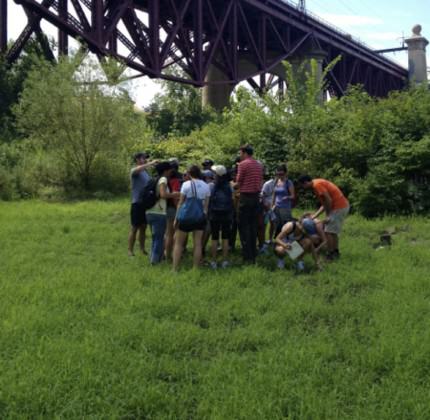
For the independent learners, there are excellent field guides for many taxa in much of the world (although admittedly biased towards the charismatic organisms and in the relatively low-diversity temperate regions). There are increasingly good technology options like Leafsnap – a smartphone app that uses automated visual recognition of leaves to identify tree species. There are active online communities that can assist beginners with species identifications – the community at bugguide.net is particularly good. And there are efforts at increasing public awareness of biodiversity like NYC Wildflower Week and several good urban nature blogs.
As a community of professionals, we can also take responsibility for advancing the dialogue about biodiversity education. Offer to go into schools and meet with teachers to see how to get urban biodiversity into the classroom. Many schools have excellent teachers that would be delighted to have local, “real world” materials for their students but they lack the expertise to develop those materials themselves. If you know enough to lead a program, offer yourself to the local nature center or park. Participate in a local natural history group or, if you don’t have one nearby, start one. Support citizen science programs – they educate and empower people and generate useful data. And when you give lectures, media interviews, etc., talk both about why biodiversity is important and why people should get to know their non-human neighbors. It will be hard to motivate the public to care about an issue unless they have a personal connection with it.
Limits to biodiversity knowledge
Although there is a lot one can learn about biodiversity from classes, field trips, field guides, online communities, and careful independent study, there are – of course – limits to our knowledge. All the documentation and analysis of biodiversity data I described earlier is limited to those organisms that are sufficiently well described by science. But there are great bushy sections of the tree of life that are largely undescribed. If you wanted to know something about urban distributions of many kinds of mites or nematodes (to pick two relatively understudied groups), you would be hard-pressed to find information. Not only do we not know much about these organisms in cities – we don’t know much about them at all. Many of the species you would find, even in well-studied parts of the world, haven’t been described, so there’s no reference to consult to find out what lives nearby. The remedy for this is an increased investment in systematics – the branch of biology focused on evolutionary relationships and which classifies and names organisms – but that’s a difficult issue for another time.
Discovery
Urban biodiversity is at several exciting points of discovery. The growing stores of information collected on the distribution of organisms in urban areas around the world will provide the data to address synthetic questions in urban ecology. Better understanding of the ways that biodiversity affects people’s relationship with urban nature will hopefully inform design and stewardship programs. Finally, although the state of biodiversity knowledge in the urban public may be low, there are multiple opportunities for citizens to learn more and discover the life right outside their door.
Let’s help them to do it.
Matt Palmer
New York City
USA
About the Writer:
Matt Palmer
Matt Palmer is a senior lecturer in the department of Ecology, Evolution and Environmental Biology at Columbia University. His research interests are primarily in plant community ecology, with emphases on conservation, restoration and ecosystem function.

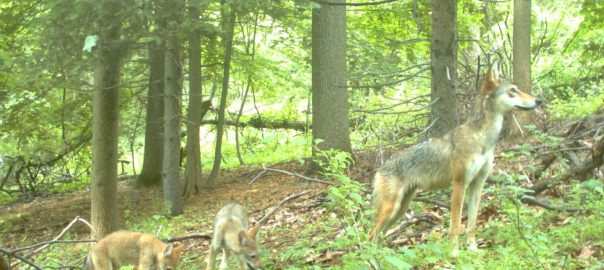


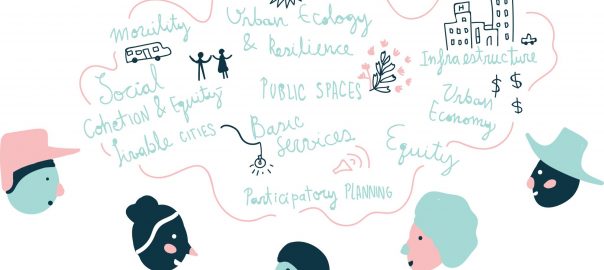
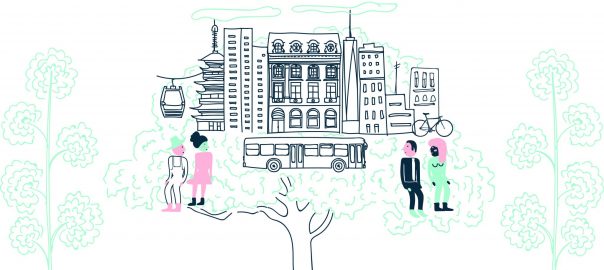
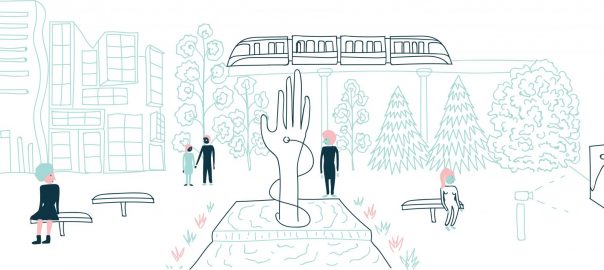
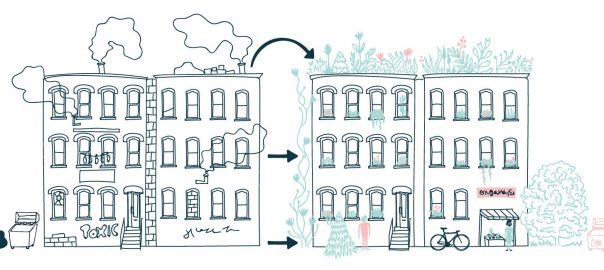
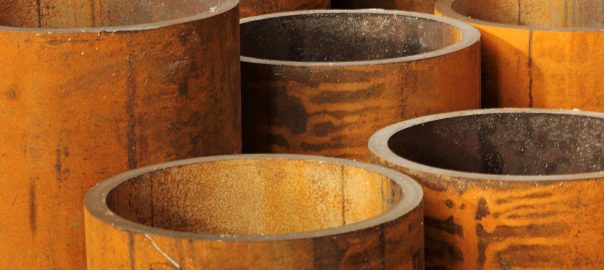
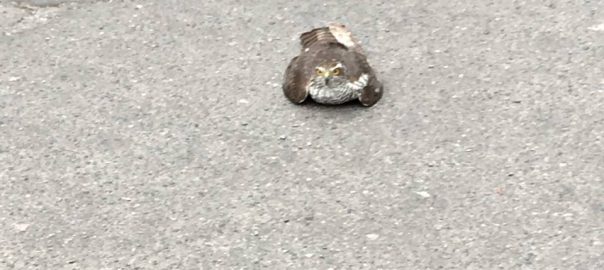
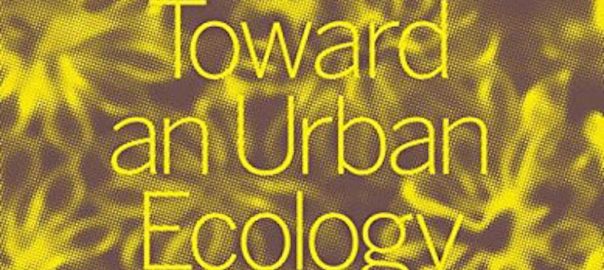
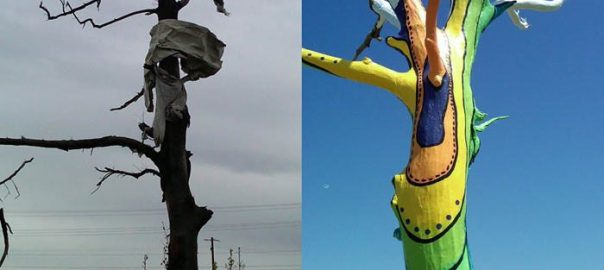
Dear Sir,
Good informative article. Recently i hv produced a short film on urban biodiversity.
This is the link to it. sincere request to watch it. location is Thane City-State Maharashtra-Country India.
https://www.youtube.com/watch?v=JLiQwhqv0MU&t=120s
The thought is eye opener. it will enhance the process of ‘naturalization of man’ towards a healthy human society.
Very valid, pithy, succnict, and on point. WD.
I couldn’t agree more Matt, the world is definitely “loosing its biological diversity.” Being a 4th year student of architecture at Auburn University, your blog made me question my previous understanding of architectural design. It has been engraved in my brain that architectural design is about creating pleasant habitable spaces for human social interaction (or the lack thereof in private settings). Why not design spaces for not only humans, but for all (or more reasonably- most) of the organisms in a given ecosystem?
For example, we could build “bug farm” retaining walls made of structural glass; the ants, worms, centipedes, and other dirt dwelling bugs would have their own designed habitat in the city, and humans would visually understand how bio-diverse the city really is. Some other ideas are to have bird houses on light poles, or to have exterior walls with staggering depths of brick for the geckos and lizards to inhabit. Could this way of thinking architecturally be a catalyst for urban biodiversity?
Matt is right. Thanks to case studies, research, and data, we already have a head start on developing an “urban matrix… quite rich” in biodiversity. New York City has done a phenomenal job including green spaces for organisms around the city. I was honestly surprised to discover that a family of wild coyotes could live in the midst of such a massive city. Then it occurred to me that a park in New York City must be the land version of the Galapagos Islands. Not only are humans evolving into urban dwellers, plants, insects, animals, and all other organisms within the city are evolving to fit urban environments as well.
Thanks, Matt, for this insightful blog. I hope my comments spark interest, discussion and possibly action towards decreasing “habitat degradation” in urban settings.
Thanks for the link, Matt. I tried to find the original source of the data – several websites and articles cite Dr. Kanner as a source for this data, but in an interview from 2000 with him published here , he cites the source of this fact as “recent studies” – which may or may not have been based on his own research. I’m still looking for leads if any of the readers know a primary source that I could cite.
I’m not at all surprised that marketers would have done extensive research on corporate brands and children. There’s an obvious (if distasteful) reason for this – profit motive. I’m even more interested in the other half of this fact – who interviewed enough children to find out how many local plants and animals they could identify? I’m particularly curious about the methods – was there a fixed set of common organisms used in the study? Or were children asked to name as many local species as they could?
Two related studies about biodiversity knowledge in children shed some light on the issue (though neither is the source of the “fewer than a dozen” fact). Andrew Balmford and colleagues published a fascinating study showing that British children could identify more fictional animals from Pokemon than actual local animals – http://bioteach.ubc.ca/TeachingResources/GeneralScience/PokemonWildlife.pdf
A recent paper by Jean-Marie Ballouard and colleagues examined both biodiversity knowledge and desire to conserve biodiversity in French schoolchildren – http://www.plosone.org/article/info%3Adoi%2F10.1371%2Fjournal.pone.0023152#pone.0023152-Balmford1
Interestingly, the authors of this latter paper surveyed both urban and rural school children but don’t comment on any differences between them. Both these papers do suggest both some baseline of knowledge greater than a “dozen” and – perhaps most importantly – that children have a great capacity for knowledge of the natural world and concern for its preservation. This is hopeful news, but it highlights a need to find a way to connect children (and the rest of us) to the local organisms we see every day.
An article at website businessinsider.com lists one study from the Wright Institute by Dr. Allen Kanner. 3-year-olds could identify 100 corporate logos. By ten, the number went up to 300-400. (http://articles.businessinsider.com/2012-01-31/strategy/31008138_1_brands-google-chrome-beach-ball)
Many thanks, Matt for your very interesting article. I particularly like your reference to “biodiversity blindness”.